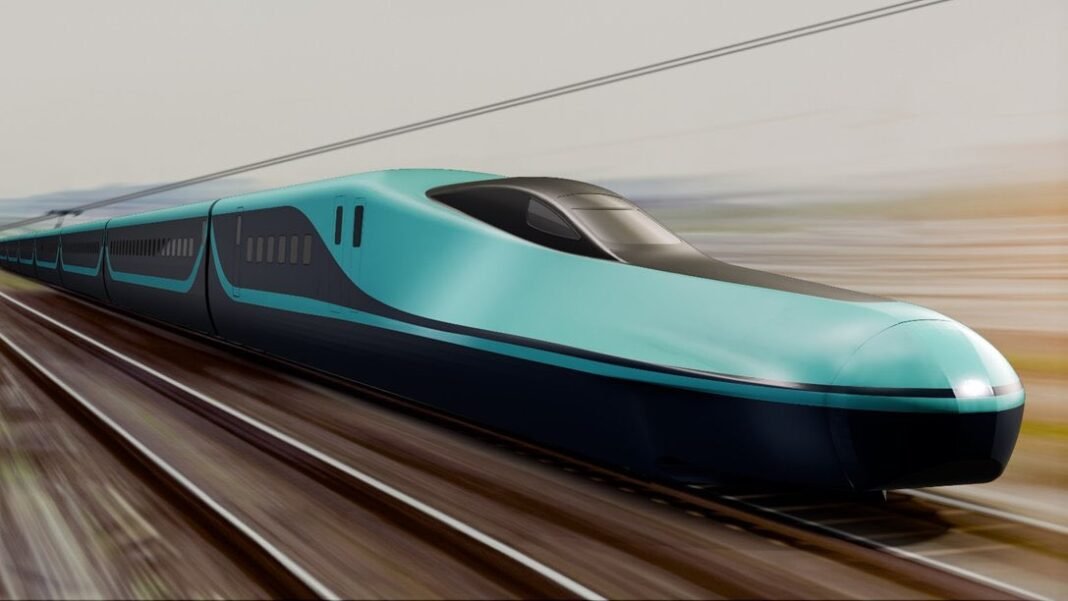A Leap in India’s Rail Future
India is on track to enter the league of nations with operational bullet trains, as the Mumbai–Ahmedabad High-Speed Rail (MAHSR) project nears its crucial development phase. The highlight of this ambitious venture is the introduction of the next-generation E10 Shinkansen trains from Japan, designed for both speed and safety, promising a transformative experience in Indian rail travel.
The project, launched in 2017 with Japanese collaboration, has overcome delays caused by land acquisition and technical challenges. Construction activity has since accelerated, with the first section expected to be ready by 2027 and the full 508-kilometre route operational in 2028.
The Shift from E5 to E10
Originally, India was set to procure the E5 Shinkansen series. However, rapid advancements in Japanese railway technology meant India was offered the state-of-the-art E10 series instead. This model, inspired by Japan’s iconic cherry blossoms, carries several upgrades over the E5.
The E10 retains a maximum operational speed of 320 km/h but is capable of reaching 360 km/h when unrestricted. More importantly, it comes with cutting-edge earthquake-resistant features. “L-shaped vehicle guides” and lateral dampers are engineered to prevent derailments during seismic activity — a vital addition considering India’s active earthquake zones.
Features Tailored for India
The E10’s interior has been designed to meet both global standards and India’s growing passenger needs. Wider seats, increased luggage space, and dedicated window seats for wheelchair users improve accessibility and comfort. A flexible seating plan allows coaches to be adapted for either additional passengers or cargo transport, making the service versatile.
A premium “business class” option will feature leather recliners, built-in desks, and onboard Wi-Fi, giving travellers an airline-like experience on the ground. The trains will sport forest-green interiors, a unique design touch to reflect elegance and calm.
JR East announced the E10 series, the next-gen Tohoku Shinkansen, set to replace the E2/E5. Design is underway, with first units arriving after autumn 2027 and commercial operations starting in 2030.
Key Features of the E10 Series:
•Safety Enhancements: The E10 series… pic.twitter.com/tAzBdHhUBq
— Japan Station (@JPNStation) March 4, 2025
Cutting-Edge Safety and Efficiency
One of the most notable upgrades in the E10 series is its braking system, which reduces stopping distance by nearly 15 percent. The train can decelerate from its top speed to a complete halt in under 3.4 kilometres, compared to the E5’s four kilometres. For a densely populated country like India, this capability adds an essential safety cushion.
In addition, the new engines are more energy-efficient and prepared for future upgrades, including the possibility of fully automatic train operations. While automation in Indian railways may raise concerns due to frequent rail accidents, experts see it as a step toward safer, more predictable train control in the long term.
Broader Vision for High-Speed Corridors
The Mumbai–Ahmedabad line is only the beginning. Discussions between Prime Minister Narendra Modi and Japanese Prime Minister Shigeru Ishiba are expected to explore additional high-speed rail corridors. Options under review include routes from Pune to Ahmedabad, Delhi to Amritsar via Chandigarh, and others identified in feasibility studies as early as 2009.
The Japanese government has played a crucial role in enabling this landmark project. Nearly 80 percent of the funding comes from a soft loan from Japan’s International Cooperation Agency, making it one of the largest bilateral infrastructure collaborations between the two nations.
Symbol of India–Japan Partnership
During his visit to Japan this week, Prime Minister Modi is expected to meet Indian train operators undergoing training and tour the factories where the E10 series is being developed. His visit also doubles as an invitation to Japanese businesses to invest more deeply in India.
In his address, Modi highlighted that Japanese companies have already invested over $40 billion in India across sectors like semiconductors, technology, and healthcare. Japan has committed to further invest 10 trillion yen ($68 billion) over the next decade, strengthening ties that extend well beyond the bullet train project.
Towards a High-Speed Future
By 2028, the dream of covering the Mumbai–Ahmedabad journey in just over two hours will likely become reality. The E10 Shinkansen series is more than just a train — it represents a new era in Indian infrastructure, symbolising speed, safety, and international cooperation. With its advanced features, earthquake-proof design, and commitment to passenger comfort, the E10 will reshape how Indians perceive long-distance travel.








